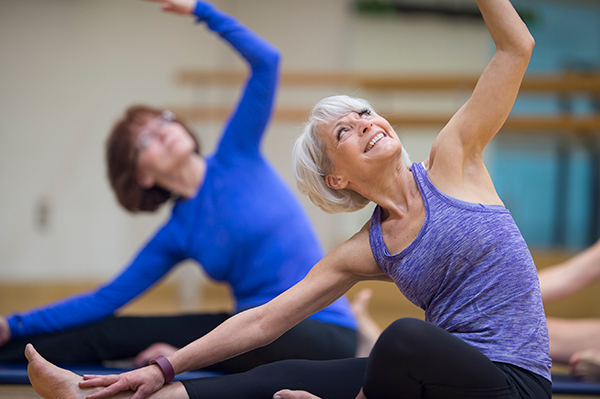VALUABLE CHIROPRACTIC HEALTH ADVICE FROM DR. BURDETTE
HEALTH TIPS: HOW TO PREVENT MUSCLE AND JOINT PAIN AND STRESS

Body movements we do repeatedly, every day, can cause aches or pains. Standing for long periods of time, sitting for hours without proper breaks, stretching, and exercise can cause stress on the structures of our musculoskeletal system. Improper spinal alignment and poor posture are factors involved in causing undue stress on our bodies. The most common symptom of stress to our ligaments, joints, and muscles is pain.
Aches and pain can be felt at the area of stress as well as other areas of the body. Pain is the body’s way of alerting us that something needs adjusted. Although many people have pain on a regular basis, pain should not be considered normal. Pain should always be evaluated by a healthcare professional. Dr. Burdette is a trusted professional who can provide a thorough assessment to quickly diagnose your condition and provide a treatment plan best suited for your individual needs.
PROPER POSTURE AND PRACTICES FOR SITTING
Sitting
If you sit for long periods of time, proper practices should be followed to avoid injury. Choose a chair that provides support for your back. Your feet should be flat on the floor (not dangling). If your chair cannot be adjusted for your feet to be flat on the floor use a small stool for proper foot placement. Your lumbar (or lower back) region should be supported. If your chair does not give you support in the lumbar area you can use a small pillow or rolled towel to provide support. Items should be removed from your back pockets. Sitting with items in your back pockets does not allow for proper spine alignment. Do not cross your legs when you are sitting as this can interfere with circulation. Be conscious of your body position and sit up straight.
Although not always possible, try to stand up every 20 minutes. If you are unable to stand up, at least try to stretch frequently. Move and stretch your lower and upper extremities. Make it a habit to point and flex your toes while sitting.
Be sure that your computer monitor is directly in front of you at eye level. Your keyboard and mouse should be in front of the monitor. Avoid positioning these items in a way that would make you turn and stretch. Your arms should be supported and your head and neck aligned. Move your chair as close as possible to your work station to decrease extensive reaching, leaning, or twisting.
TIPS FOR EXTENDED STANDING AND TELEPHONE USAGE
Telephone use Techniques
If possible, use a lightweight headset device instead of a telephone when communicating. If you do not have access to a hands-free device consider using the speaker option, or alternate the hand you use to hold the phone. Be sure your head is kept in alignment and do not cradle the phone in your neck.
Standing
Stand straight with your head upright. If you stand in one place for extended periods of time, use a small 4-6 inch stool to alternate resting one leg, then the other. Spongy mats can also be used to provide a cushioned area to stand on. Wear appropriate shoes while standing. Shoes should be comfortable and provide adequate support. Avoid high heels if you are required to stand for a prolonged period of time.
HOW TO LIFT AND SLEEP CORRECTLY TO PREVENT INJURY
Lifting
Use safe, correct lifting techniques. If an item is too bulky to grasp firmly or too heavy to lift safely ask someone to assist you. If you feel confident that you can safely lift an item, use the proper lifting technique. Never carry an item higher than your armpits or lower than your knees. Before lifting be sure your path is clear of anything that could hinder the task. Squarely face the item you are going to lift. Stand with your legs slightly apart (about 15-20 inches) with one foot slightly in front of the other. Position your body as close to the item as you can. Bend your knees and grasp the item firmly. Hold the item close to your body. Lift slowly by gradually standing up using your legs and abdominal muscles. Do not allow your back muscles to do the lifting. Do not twist while carrying a heavy item or when placing an item. Instead of twisting take steps to keep your body in proper alignment to carry or place an item.
Sleeping
Use proper sleeping posture to avoid discomfort and long-term injuries. Avoid sleeping on your stomach. Use a firm and comfortable mattress. Sleep on your back or on your side with your knees bent and a pillow between your knees. Use a pillow that keeps your spine in line with your body, such as the Chiroflow therapeutic pillow.
General Tips
Stretch your muscles and warm up before engaging in exercise or strenuous activities.
Exercise regularly. Do activities that you enjoy and that are safe for you to perform. Walking, swimming, and bicycling are excellent aerobic activities to strengthen muscles and condition the body. Follow a healthy diet to maintain your weight. Increased weight adds stress on our back, joints, and body structures.
